by Susan Dean | Feb 6, 2018 | Earth Science
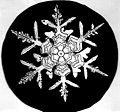
Little Susie Snowflake was born very high above the earth where cirrus clouds occur (35,000 feet) from a tiny amount of water vapor that froze a pattern around a tiny particle of pure salt from sea spray!
At first she was a plain hexagonal crystal of ice but she floated around and around attracting more water molecules and grew stubby arms. Then thin ice filled in the spaces between Susie’s arms. It was about 35 degrees below zero and she slowly grew into a simple little plate snowflake, so small she was barely visible!
She fell from her high perch into a veil of snowflakes with millions of little flakes just like herself and soon landed on the top of altostratus and altocumulus clouds (25,000 feet high.) The top layer of the clouds was still very cold (20 degrees below zero.) As Susie fell through the deck of clouds it got warmer and warmer (14 degrees above zero). There was lots more water vapor and Susie grew 6 more arms with odd little decorations between them and more thin ice formed around her edges. Susie became a large beautiful plate with thickened edges and sharply pointed corners.
She tossed about in the churning clouds and sank into the low stratocumulus clouds of a winter storm. There was even more water to grow on! The temperature was almost 0. She drifted downward growing 6 broad plate-like extensions at each corner.
Susie reached snowflake paradise when she entered nimbostratus clouds with an abundance of water. The temperature was 10 degrees above 0 and she started to grow fast! Needlelike arms started shooting out and branching crystals grew from them until they touch and connect. She continued to branch as she fell and grew armfuls of branching crystals, extending the points and ending them with hexagonal plates.
She became heavy enough in her crystal dress to leave the paradise clouds and fall to the earth. Susie Snowflake might have landed in my yard and become part of a snowman or maybe we ate her in our snow cone! Or Susie could have been part of a glacier or maybe one of the plants in the yard drank her when she melted and she became part of the plant!
Snowflake Bentley from Vermont photographed a snowflake for the first time in 1885 when he was 19 years old. Although ice crystals are clear, scattering of light by the crystal facets and imperfections make the crystals appear white in color. The whole spectrum of light is diffused by the small ice particles. Guinness World Records list the world’s largest snowflakes as those of January 1887 in Montana. Allegedly one measured 15 inches wide. The exact details of the sticking mechanism remain controversial. Possibilities include interlocking, sintering, electrostatic attraction as well as the existence of a “sticky” liquid-like layer on the crystal surface. The individual ice crystals often have hexagonal symmetry.
WHO IS SNOWFLAKE BENTLEY?
by Susan Dean | Feb 6, 2018 | Earth Science
“One of the most soothing sounds of nature is the laughter of falling water.” Jeff Cox
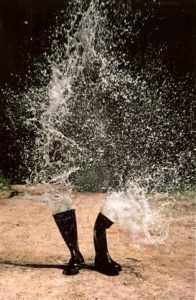
“Water Boots” Roman Signer
Water is the universal solvent. It is tasteless, colorless, odorless and unique. It is the only element on the earth found in all three forms – liquid, solid, and gas. Considered the universal solvent, many things dissolves in water and it flows through everything that is alive. It is unique because when it freezes it grows bigger. The most important things we must have to stay alive are oxygen from the air and water to drink.
Water cycles. It evaporates into the air, condenses into clouds and precipitates out as rain, snow, sleet, hail, fog and dew. The sun is the driving force. Teach children the water cycle song.
This is a good time to talk about temperature and how molecules respond. When they are cold they pack closely and jiggle. When they heat up they start to slide around melting and then begin to move faster when they get hot and jump into the air. Children enjoy acting this out.
Examine pictures of clouds and lightning. Clouds are the largest electrical generators. Lightening is electrical flashes between the clouds and the earth. Thunder is made when the heat from the electrical flash makes the air expand quickly making the sound of thunder. You can illustrate this by popping a bag of air. The quick expansion of air makes the pop.
Talk about safety. Lightening is dangerous and they should take cover in a safe place like a building or car during a storm.
Children need to know that it is very important for them to drink water and all animals and plants are mostly made of water.
We are conductors of electricity and it can be shown with the energy ball and by rubbing a balloon on someone’s hair.
Materials: Hand drum, Mickey Mouse Molecule (paper mache) representing water, Hand out of the water cycle picture to color, Pictures of water, ice and clouds, water cycle chart, paper bag, misc. materials for doing other water experiments you choose.
The Mickey Mouse Molecule
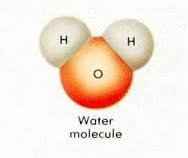
Activities: Water cycle song, Act out the effect of temperature on molecules of water. Put a drop of food coloring in a bottle of water and watch the molecules disperse. Dissolve different substances in water ex. salt or sugar. Check buoyancy of different objects in water, a magnet goes through water, light goes through water. Check surface tension by floating a paper clip on the surface of a glass of water. , check the capillary action by putting the tip of a paper towel in a glass of water. Show examples of erosion, evaporation, condensation. Show difference in density of fresh and salt water with an egg. The egg floats in salt water. A straw appears bent in water. Explore the qualities of water through experiments, river books, rain sticks, and crystals.
Without water we are nothing.

Ice Halos, Joshua Thomas, a photographer in Red River, New Mexico, was lucky enough to catch rainbow-like arcs and pillars of light blazing over a snowy landscape last week. This is caused by the collision of light and ice crystals high in Earth’s atmosphere.
Those frozen specks of water refract light in myriad ways to produce arcs, halos, and pillars of light. Air temperatures and the shape and arrangement of ice crystals fine-tune the phenomena that we see.
In the center of the image is a bright, vertical mass called a sun pillar. Cooler air temperatures boost the brightness of these phenomena. The circle of light ringing the pillar is a 22-degree halo. These halos are fairly common and are so named because they occur at a 22-degree angle from the sun. They’re created of hexagonal ice crystals.
The glaring blob of light to the right of the pillar is called a sundog, the result of ice crystals that are only partly aligned with each other. Sundogs are fairly common.
The delicate strands of light winging out from the top of the sun pillar are tangent arcs. They’re formed when tube-shaped hexagonal ice crystals are oriented on their sides. The halos and arcs aren’t a harbinger of dangerous weather events.

WATER QUOTES
When the well is dry we know the worth of water. Benjamin Franklin
The frog does not drink up the pond in which he lives. American Indian
Water has become a highly precious resource. There are some places where a barrel of water costs more than a barrel of oil. Lord Axworthy
Throughout the history of literature, the guy that poisons the well has been the worst of all villains.
“A lake is the landscape’s most beautiful and expressive feature. It is earth’s eye; looking into which the beholder measures the depth of his own nature.” Thoreau
The noblest of the elements is water. Pindar
“Water is the only drink for a wise man.” Thoreau
“When you drink the water, remember the spring.” Chinese proverb
“The cycle of life is intricately tied up with the cycle of water.” Jacques Cousteau

A GREAT BOOK I RECOMMEND
Frost Flowers – It is as beautiful as it is rare. A frost flower is created on autumn or early winter mornings when ice in extremely thin layers is pushed out from the stems of plants or occasionally wood. This extrusion creates wonderful patterns that curl and fold into gorgeous frozen petioles giving this phenomenon both its name and its appearance.
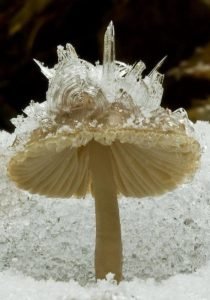
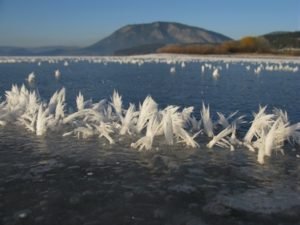


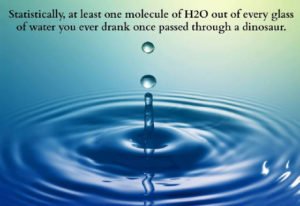
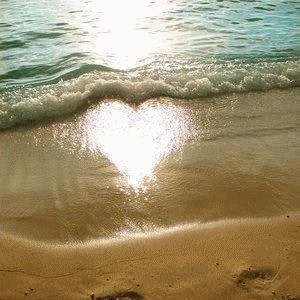
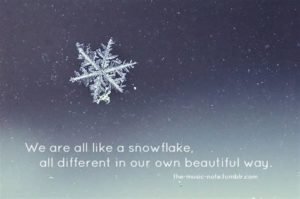
LAKE HILLER, AUSTRALIA
BLOOD FALLS,ANTARTICA 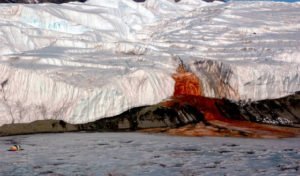
by Susan Dean | Feb 6, 2018 | Earth Science
CRYSTALS “The Flowers of the Mineral Kingdom”

Crystallography is the study of crystals. The father is Abbe Hauy. The most obvious characteristic of crystals is transparency and geometric regularity. There are 14 BRAVAIS LATTICES grouped into 7 SYSTEMS. X-rays passing through a crystal scatter in a regular pattern. All minerals crystallize into their own individual lattice structures. All minerals are made of crystals. Crystals can be grown synthetically. A unit cell is the smallest spatial structure possessing the characteristics of the mineral as a whole.
ALL CRYSTALS have symmetry. There are different planes of symmetry and a center of symmetry. Our body has bilateral symmetry. All crystals possess DIAD, TRIAD, TETRAD, or HEXAD symmetry. Systems are defined in terms of symmetry:
SYMMETRY: 3 TYPES: There is always a balanced pattern in the arrangement of the FACES
1. PLANE if cut along the plane there will be a mirror image
2. ARIAL is symmetry around an axis. There are identical faces in identical positions at regular intervals. May have several axis of symmetry 2 fold, 3 fold, 4 fold, 6 fold
3. SYMMETRY ABOUT A CENTER each face has a parallel face to it on the opposite side
The surest way to I.D. a crystal is x-ray diffraction. Crystals are solids with geometrical form and are built up from a large # of tiny units having the same shape – the solid state is synonymous with the crystalline state. ATOMS make up all matter, are in constant motion, and their energy increases as the temperature increases. As the temperature cools, atoms arrange themselves in an ordered structure. The outside shape of a crystal is determined by many inside tiny units that have the same angles and form regular shapes.
FLOURESCENCE: Minerals can glow in a variety of colors when exposed to Ultraviolet light. Impurities in the minerals are “activators”. The color depends on the activator and the kind of U.V. light (long or short wave)
The 6 LATTICE SYSTEMS:
1. CUBIC 12% salt has the highest degree of symmetry.
2. HEXAGONAL 8% of crystals including snowflakes and most gems.
3. TRICLINIC or TRIGONAL: 9% such as wollostonite, rhodonite, kyanite, microcline, axinite, plagioclase, corundum, calcite, hematite, tourmaline, and QUARTZ
4. TETRAGONAL: 10% include rutile, zircon, scheelite, scapolite, wulfenite, and chalcopyrite
5. ORTHORHOMBIC: 22% include sulfur, stilinite, arsenopyrite, marcasite, aragonite, witherite, andalusite ,topaz, olivine, cordierite, chalcocite
6. MONOCLINIC: wolframite, azurite, malachite, gypsum, crocoite, vivianite, erythrite, datolite, epidote, stilbite, and pyroxenes
Crystals usually occur in groups in rock fissures, cavities (geodes) or flat surfaces (druses). Sometimes they penetrate one another. MASSIVE Crystals are minerals with crystals too small to be seen. TWINS / Twinning is 2 or more inter-grown crystals as zircon, rutile, cassiterite, staurolite, Iron cross=pyrite. Their formation depends on the geological conditions: Graphite, ice cubes, sand, the metals in bridges, coins, asprin, snowflakes, icicycles, stones, salt, sugar, bones
Crystals often can be as transparent as glass. A small amt. of impurities can cause fantastic changes in color. Impurities are responsible for color changes in stars. Some crystals are electrical conductors.
LUMINESCENCE = a crystal emits light when scratched, tapped, or broken. ex. sugar.
PHOSPHORESCENCE = when crystals glow after a light source is shut off.
FLORESCENCE = when they glow under a UV light
ELECTROLUMINESCENCE = crystals glow when electric current is passed through.
THERMOLUMINESCENCE -= if they emit light when warmed. ex. barite
There are many electronic uses for crystals in lasers, t.v. , telephone, computers
Some crystals generate a small electric current when struck. Squeezing can create a pulse of electricity because of the arrangement of the unit cells as in quartz. Some crystals generate electricity when heated. Tourmaline has no elec. charge but when heated, one end turns + and the other – . As it cools it reverses. Sometimes liquid is trapped in a crystal. In N.Y. someone found calcite crystal with a pint of water trapped inside for 8 million yrs. Sometimes they trap gases too.
Democritus identified the smallest piece of matter as atoms. Each element is made up of different kinds of atoms. You combine 2 or more atoms to make molecules. An atom is mostly empty space and resembles a solar system. It consists of a nucleus of protons and neutrons with electrons spinning around it. The electrons can make quantum jumps in orbit around the nucleus. A magnet or a + electric charge will cause a light beam to swerve.
Atoms build matter in the three forms of a solid, liquid or gas. Crystals grow from gases or liquids! Atoms go from disorder to order. Atoms are always in motion. Molecules have qualities like a magnet with a + or – charge and attract or repel. The electrical charge can be weak or strong. Two factors determine the state of matter = molecular motion and electrical attraction.
A GAS has no shape, size, or volume and molecules have a weak attraction for each other and there is almost total disorder. There is a resistance of a gas to an object moving through it and the resistance can add up as the breeze you feel when you ride a bike or swing. Atoms of most gases team up to make molecules. The NOBLE GASES do not pair up = helium, neon, argon
LIQUIDS do not have shape but they have size and volume. They don’t spread out like gases. The molecules stick together but slip and roll over each other. It takes more force to push molecules apart than air!
SOLIDS have volume; take up space, and have a definite shape. The molecules bound together vibrate! CRYSTALS are molecules arranged in the highest degree of order – the solid. It has billions of tiny crystals.
THE 4th STATE of matter is PLASMA = a hot gas with no electrons.
5th STATE = SUPERSOLIDS packed tight under extreme pressure.
CRYSTALS are like “frozen ice”. Most crystals are too small to see with the naked eye. Crystals are groups of atoms, molecules, or compounds that have firmly clumped together like bricks layered from a disorderly pile. The electrical forces within give them their shape!
Crystals need nuclei to form:
1. Around dust particles
2. In supersaturated solutions (warm liquid dissolves more solid matter)
Heat puts atoms in motion. Cold slows atoms down. The bonds that hold molecules together are of different strengths. Each kind of molecule has a unique shape of it’s own. Freezing temps and boiling temps vary depending on the strength of the bonds. The freezing point and melting point are almost identical.
Sublimation is when gas turns to solid or solid to gas with no liquid step.
Quartz is the most abundant crystal has unit cells of 3 silicon dioxide mol. clasped together in repeated patterns. It takes time and freedom to form perfect crystals – the less time and freedom the more defects. Glass is not crystalline but a supercooled liquid that becomes hard so quickly there is no time for crystals to organize. It is amorphous and has no shape to it’s structure.
The final shape of natural crystallization is it’s HABIT = the preferred mode of growth = the arrangement and proportion of faces on a single Crystal.
HABITS:
1. Acicular needlelike – natrolite
2. Bladed broad flatlike blade – gypsum
3. Dendritic treelike or branching – copper
4. Equant = same diameter in every direction – garnet
5. Prismatic elongated in one direction – tourmaline
6. Striated shallow parallel grooves on 1 or more faces – pyrite
7. Tabular thick or thin flat plates – wulfenite
Most minerals lock together in more than one pattern depending on temp. pressure, and saturation. They have more than one habit = ALLOTROPIC “variety”. Habits change. They change from 1 habit to another as the temperature drops. Water is a mineral with 4 habits. ASBESTOS has 1 habit = stringy crystals
Carbon has 2 habits: forms graphite in hexagonal system or diamond in cubic system
1. Graphite smooth slippery flat 6 sided molecules easily slide over each other – used as lubricant and to write
2. Pyramid crystals high temp. and great pressure = diamond the hardest
RADIOACTIVITY occurs in some minerals like uranium, thorium. They give off energy as radiation. Some are a rich orange, green or yellow in color. Some minerals respond to a magnet, usually the iron bearing minerals. Lodestone is a natural magnet, and varieties of magnetite, franklinite, hematite, chromite, pyrrhotite, ilmenite. Magnetism grows stronger when heated and depends on the amt. of iron content.
OTHER PROPERTIES:
TASTE: a mineral must be soluble in water to have taste as salt, epsomite, borax
ODOR: arsenopyrite = garlic, kaolinite = earthy, Pyrite = sulfurous
FEEL: soft, smooth like chalk (a rock composition of microscopic fossil shells)
Acid test for carbonate minerals: crush some and add a few drops of acid and they will bubble = aragonite, calcite, dolomite
LIQUID CRYSTALS are crystals that have characteristics of liquid and solid states. Can be poured yet molecules arrange themselves in rows side by side. Some change color with a small temp. change. The membranes surrounding brain cells are made of liquid crystals. Our sense of smell may be due to liquid crystals. Most liquid crystals change the way they group together when exposed to different chemical vapors!
CRYSTAL WISKERS are single perfect crystals and are very strong. They were discovered as interference in miniature electrical equip.
METALS a few dislocations or mismatches make a metal soft with wider planes of slippage. Many dislocations make it hard.
Gems are minerals that have ornamental value of beauty, durability, rarity (about 20 minerals). The most valuable gems are at least as hard as quartz. There are about 2500 minerals known and they are of many different COLORS or can be multicolored or banded or metallic. Gems have outstanding transparency, luster, color. They are prized for their beauty. With little or no flaws they are cut, shaped or polished.
1. FACETED for brilliance = diamond
2. POLISHED for stars, colors and patterns = tigers eye or sapphire
3. CARVED as jade, turquoise, or agate
ROCK is an aggregate of minerals. We learn about the earth’s history from understanding the differences in rocks and how they are formed and from fossils. Minerals like rocks form under a variety of conditions of heating, cooling and pressure.
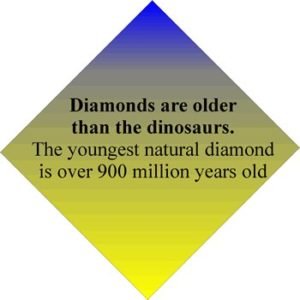
Natural Crystal Cave Nacia, Mexico
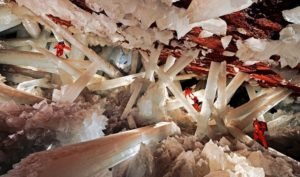
by Susan Dean | Feb 6, 2018 | Earth Science

“The Greatest Star of Them All” by Alexander Green www.spiritualwealth.com
Familiarity can be the enemy of awe and wonder. This is particularly true of something we see less and less this time of year: the Sun. Throughout most of human history, we had no idea the Sun was a star… or that the stars scattered across the night sky were other suns unimaginably far away. For thousands of years, it was an article of faith that the world was an immovable disk around which the Sun, the planets and the stars all revolved. Everyone believed, indeed knew this. That changed a few centuries ago. Yet it is only within the last few decades – using everything from ground-based telescopes and spectroscopes to the space-based Solar and Heliospheric Observatory (SOHO) – that we have gained a real understanding of our nearest star.
So let’s take a closer look at the celestial giant on which so much of our lives depends… The Sun is 93 million miles away. A passenger jet flying 550 miles per hour would take 20 years to get to the Sun. To reach the next nearest star, Alpha Centauri, that same plane would need five million years. The Sun is by far the largest object in our neighborhood, making up 99.8 percent of the mass of the solar system. Its diameter is 865,000 miles. Were it hollow, 1.3 million earths could fit inside it. Yet, in astronomical terms, the Sun is just an average-sized gas ball – out of some 200 billion – in the Milky Way galaxy.
Things look fairly placid here on Earth, if not downright stationary. But that is an illusion. The Earth spins on its axis at 1,040 miles an hour while chugging around the Sun at 66,600 miles per hour. Meanwhile, the Sun – with its retinue of planets – is screaming around the center of the galaxy at 483,000 miles per hour while the Milky Way itself moves toward the Andromeda Galaxy at a hair-raising 1.3 million miles per hour. (And you wonder why you always feel rushed?
The Sun is the most alien place in the solar system. Its interior is unimaginable hot – at 27 million degrees Fahrenheit – and converts 400 million tons of hydrogen into helium every second. Indeed, conditions there are so extreme that hydrogen and helium atoms break into their constituent parts – protons and electrons – and re-fuse into heavier elements. That process – called nuclear fusion – is what makes stars shine.
Author and astronomer Bob Berman writes, “The power of the Sun’s continuous nuclear fusion is equal to 91 billion megatons of TNT per second. That’s 91 billion standard one-megaton H-bombs going off in the time it takes to say ‘Holy moly.'”
Fortunately, we’re a safe distance away. In fact, we’re the perfect distance away. Venus is a boiling mess. Mars is a frozen desert. But you and I are here because we inhabit “the Goldilocks zone,” a region where temperatures are moderate and water can exist as a liquid.
We are all tied to the Sun in the most intimate ways. It is the master timekeeper, marking off our days and nights as well as the years. The Sun drives our weather and climate and even affects your moods.
Psychologists are familiar with something called Seasonal Affective Disorder. When the skies turn grey, the weather cools and the days shorten, our bodies slow down, our energy wanes and our outlook darkens. Your biological clock and even your disposition are affected by sunlight (or the lack of it).
In fact, we need this precious resource to live. True, too much sunlight is damaging. But too little is dangerous, too. Sunrays generate Vitamin D, a substance that strengthens your immune system, protects against rickets, and combats osteoporosis, multiple sclerosis, rheumatoid arthritis, hypertension, diabetes and influenza. Vitamin D is the most powerful anti-cancer agent ever discovered. Researchers say you should enjoy 20 to 30 minutes of sunshine before applying sunblock.
Not just our planet revolves around the Sun, but life itself. Through photosynthesis, plants convert sunlight into usable energy, kicking off the food chain and creating the foundation for the entire web of life. The Sun is responsible for most of our energy, too. In “Chasing the Sun,” Richard Cohen writes, “The Sun is the great self-renewing resource, the creator of coal, peat, oil, hydroelectricity, and natural gas. It raises moisture into the atmosphere, to return as the downpours that drive turbines; it powers the winds and the waves, and all their effects; it lavishes itself over the entire planet, delivering to the Earth’s surface more energy in just forty-four minutes than we use in a year.”
The Aztecs and Egyptians worshiped the Sun, as did the Persians, Incas and Tamils of southern India. Grand monuments to it still dot the globe, from the pillars of Stonehenge to the Great Pyramid at Giza to the temple ruins of Machu Picchu. This is not surprising, really. Consider how many ways the Sun resembles the traditional image of a deity: It is a mysterious enigma, ever-present, powerful beyond measure, a giver of light, responsible for life on earth, yet too terrible to gaze at directly. Sun worship stemmed from a fundamental truth: Without our nearest star, life on earth wouldn’t exist. Yet knowledge about the Sun was not easily won. We had to wait for the advent of the telescope and the scientific method. Isaac Newton, in fact, spent so much time studying the Sun that he had to shut himself in a darkened room to wait for the full return of his sight. It took three days. Dutch philosopher Spinoza ground the mirrors for his own telescope – and died at 44, his lungs rotted from year of inhaling glass particles.
Early church authorities tried to strangle the science of astronomy in its cradle, insisting it undermined the Bible’s geocentric view of the universe. Joshua commanded the Sun to stand still, not the Earth, thundered Martin Luther. When Italian astronomer Giordano Bruno openly theorized that the Sun was a star and the universe might contain other worlds, he was promptly put to the stake. Galileo, the father of observational astrononomy, was forced to recant his heliocentric views and placed under lifelong house arrest. Scientists quickly got the message, privately declaring that it was better to be humble than hanged. Progress and scientific understanding could not be stopped indefinitely, however. Today we know the Sun influences crop yields, global temperatures and ocean currents. Solar eruptions – caused by intense magnetic activity – affect the position and strength of the Gulf Stream, the frequency of auroras, the clarity of radio transmissions, the longevity of Earth satellites, the thickness of the atmosphere and the condition of the ozone layer.
The atoms that make up your body were forged in the heart of ancient suns. The iodine in your thyroid gland was fashioned from supernova material. The iron in your blood came from the cores of previous star generations. As Carl Sagan famously declared, we are star stuff contemplating star stuff. The Sun is the lamp of the world, an awe-inspiring, life-giving ball of fire, a constant source of comfort and wonder. Throughout history, it has dominated art, language, religion and science. It is the great muse of artists, responsible for glorious sunsets, dazzling rainbows and the ethereal Northern Lights. Yet there is much about the Sun we simply don’t know. Scientists are still trying to understand what causes sunspots and solar winds, how its magnetic particles affect the Earth’s climate and how the Sun’s rays can be cost-effectively captured.
New spacecraft are even being designed to harness its power. Engineers are betting that some day – many years hence – it might be just the right fuel to carry us beyond our dying star’s grasp and out of the solar system… in search of another Sun.

by Susan Dean | Feb 6, 2018 | Earth Science
“For my part I know nothing with any certainty, but the sight of the stars makes me dream.”~Vincent van Gogh ~
Time lapse photography of stars movement.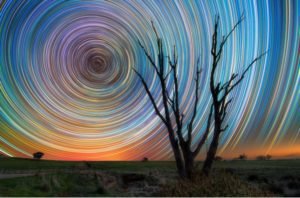
The Sun and Stars
Nebulas are stellar nurseries where stars are born. They are beautiful places in our universe of incredible shape and colors! They are huge clouds of spinning balls of gas and dust. Particles are drawn together by gravity and shrink to form pro-stars. As they shrink the particles collide and fuse together and explodes out creating heat and light. It ignites and a star is born. Planetary nebulas are born from the death of old stars.
New stars are blue and white and very bright. Dwarf stars are smaller and last longer. Large giants and super giants have shorter lives. When the supply of gas runs out the star dies. If a cloud spins slowly it creates one star. If a cloud spins fast it creates twin stars.
If a cloud spins medium, a star with planets is born. About ½ stars in universe are double stars.
Our sun is 93 million miles from earth. The sun’s diameter is 869,900 miles. The suns light takes 8 minutes to reach us. There is fusion inside the core of the sun and atoms of hydrogen collapse into each other forming helium and giving off enormous energy. Seventy elements have been identified in the sun by a spectroscope.
The layers of the sun are:
1. core
2. radiation zone
3. convection zone
4. photosphere a sea of boiling gases 10,000 * F – the thin layer of the sun’s surface
5.chromosphere – the inner atmosphere
6. corona the outer atmosphere is the halo you see during a solar eclipse by the moon that stretches far into space and lasts 7 minutes. Sometimes during an eclipse, a diamond ring shines out or “Bailey’s Beads,” little rays that sparkle through an eclipse.
The hottest stars are blue and white. The hottest stars have the brightest light. Medium stars are yellow-orange and cooler stars are red. Small stars fade away. Big stars grow bigger and cooler changing from blue or yellow to red. A red giant may swell to a super giant and explode in a supernova pushing it’s outer layers into space leaving a tiny star, a white dwarf that is very dense and heavy. They are tiny, dense, and give off x-rays. Their weight gives them enormous gravity.
White dwarfs are old stars with a dim light. They may explode to neutron stars or black holes. The neutron star radiates like a lighthouse, is dense, heavy, and spins fast giving off radio waves. One cup of neutron stars weighs a million million tones. 1 cup of white dwarfs is 100 tonnes. There is a gravitational collapse. The red super giant vanishes.
Shooting stars are not stars but meteors that enter our atmosphere and burn up. Stars aren’t moving. The earth is rotating. Stars twinkle because their light wobbles as it passes through our atmosphere. The color of a star reflects the temperature of the star and it’s composition. The star sphere has an equator. There are more than 500,000 million stars are in our galaxy of stars alone.
Galaxies are groups of stars. Galaxies cluster together. There are billions of galaxies. A Spiral galaxy is a flat disc with arms spiraling out from a center bulge. The Milky Way galaxy is a spiral galaxy fairly large at 100,000 light years across. Old stars are in the center. Young stars are in the arms. The whole Milky Way Galaxy of stars spins in space. The milky river of starlight we see in the sky is part of the Milky Way Galaxy. Our solar system is 2/3 of the way out from the center of our galaxy. Galaxies may be barred spiral and arms curl out from a bar. Elliptical galaxies are usually old stars. Some are like squashed balls, and some become irregularwhen they collide with another galaxy. This is the rarest type. The galaxies closest to ours are the large and small Magellanic Clouds that are irregular galaxies. Andromeda is the nearest visible galaxy. Galaxies group together to form super-cluster chains. Our Milky Way Galaxy belongs to a group of galaxies called The Local Group. If you look toward Sagittarius, you are looking toward the center of our galaxy. We are part of the LOCAL GROUP of 32 galaxies. Our sun is the star of the Milky Way Galaxy! If there is no sun then there is no heat, no light, no clouds, no rain, no life. Thereby it shines and spins by the grace of The Creator.
Stars contain 99.8 % of the matter in the solar system. Solar means of the sun. If you weigh 60 lbs on earth, you would weigh 1,680 lbs on the sun. Our sun is a nuclear bomb 5 billion years old and it will continue to burn for 5 billion years more. Heat, light, and electrically charged particles stream out from the sun to the ends of the solar system. Hydrogen is the sun’s fuel. The sun’s gravity locks the planets in orbit. Planets circle the sun. The solar system has 9 planets and 60 moons, millions of asteroids, and billions of comets!
Planets in our solar system are much closer to us than stars. The closer a planet is to the sun, the faster it must move in orbit. The closest star to our solar system is Alpha Centauri. SIRIUS is the brightest star in our sky magnitude 1.4. The faintest stars are mag. 6.
In 1543 Copernicus said planets go around the sun and the earth rotates on its axis. The sun spins on an axis and turns 1 time in 25 days – 27 days at the equator. The sun mystery is that the sun wobbles and shivers getting larger and smaller by10 km. The earth wobbles.
It takes the earth 26,000 years to complete one circle or precession around our galaxy. About 3,000 asteroids located between Mars and Jupiter circle our sun in what we call the asteroid belt. Ceres is the largest asteroid. Billions of space icebergs called comets travel around our sun beyond Pluto forming a huge disc.
When the solar wind lights the sky, the wind is trapped at the poles and causes beautiful auroras. I asked my father one time, “What is the most beautiful thing you have ever seen?,” and he said it was an aurora borealis. The sun constantly blows invisible gases into space. The solar wind is a flow of plasma from the sun that may cause radio blackouts, auroras, and change in the earth’s magnetism. Sunspots occur when giant storms erupt on the surface of the sun. They are cooled areas that are dark spots visible for a few hours or several weeks usually near equator. Solar flares are energy that builds up blasting jets of burning gas into space. Flames or prominences appear that can travel 200 mph and stretch 100 thousand miles. Earth is in the sun’s outer atmosphere. The earth’s atmosphere and magnetic field protect life from the sun.
On a clear night you can see about 2000 stars. There are 88 star pictures called constellations. Many are named for characters in Greek stories. (Orion the hunter is a giant who carried an unbreakable sword. The fuzzy patch of light in the sword is the Orion nebula. Stars go in circles at the poles.
Polaris is 50 times greater than our sun. Hold an umbrella and turn it, Polaris is always at the top. If Polaris sinks, the sailor is going south. If Polaris rises they are going north. If stars rise in the sky / going east. If stars are setting – west. POLARIS stays still. Face north and move arm up ½ way about 45*. There is Polaris, the last star in the handle of the little dipper. The stars aren’t actually moving but the earth is rotating. The ecliptic is the suns path through constellations in the sky called the zodiac.
Activities: Give students a picture of a constellation and let them pick out the glow in the dark stars and stick them on the wall with sticky putty. Let them make star finders. I use small pictures of the polaris constellation. Students punch holes using large push pins through the small stars in the picture through a small square of black construction paper underneath which is placed over a small square of carpet or cardboard. The black paper is placed over the end of a cardboard tube from paper towels and held with rubber band. Look through and you see Polaris! One year we made stars from clay, colored them and put them on a little tree another year we made “sun catchers” using contact paper and colored cellophane. Solar ovens are nice and we also make sun prints. I love to teach them the song “The Stars are Coming Out Like Popcorn”. They love it!
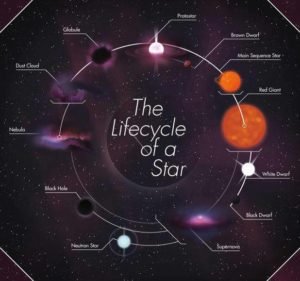
INCREDIBLE 5 YEAR TIME LAPSE OF THE SUN
CLICK HERE TO SEE MORE AMAZING SOLAR PHOTOS
by Susan Dean | Feb 6, 2018 | Earth Science
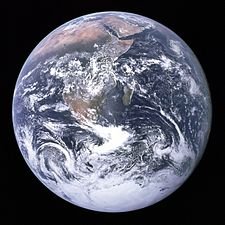
Awe-inspiring Earth Notes:
Age = 4.5 billion years old
Diameter = 8,000 miles
Weight = 6.6 sextillion tons
Circumference = 23,627 miles
Distance from sun = 92,897,000 miles
Travels 583,400,000 miles to circle the sun.
Travels at a speed of 65,868,000 mph around the sun through the galaxy.
The solar system travels 45,000 mph through the Milky Way Galaxy.
How is the earth like a loaf of bread? It has a crust. How is the earth like a birthday cake? It has layers.
Our earth is 41/2 billion years old. Earth, sometimes called the water planet or the blue planet, is a big rock of iron and some nickel. It’s called the water planet or blue planet because ¾ of the surface of the earth is covered by water and it looks pretty blue from the moon. The earth is like a big magnet, the 3rd from the sun of nine planets spinning around the sun. A star with planets is called a solar system. Our solar system is in the Milky Way galaxy, a spiral galaxy and part of a cluster of galaxies. There are many galaxies in the universe. They cluster together to make super cluster chains!
Our earth is like a layered birthday cake all decorated with life! There are 4 layers of the earth; the inner core, outer core, mantle and crust. The crust is mostly oxygen and our bodies are mostly oxygen too.
Earth erupts, quakes, has tectonic plates that slide around, has an atmosphere, weather, gravity, a thunderstorm belt, a north and south pole, an equatorial belt, and seasons. There’s a global electrical current that forms the thunderstorm belt around the earth. Earth has a negative charge and the atmosphere has a positive charge. Clouds are the electrical generators. The sun is the driving force. Gravity is the pulling force. The weight of an object on earth is the force of gravity on the object.
Earth has 5 oceans: Arctic, Atlantic, Pacific, Indian, and Antarctic. 7 continents: North America, South America, Africa, Europe, Asia, Australia, and Antarctica. 7 mountain ranges: Rockies, Andes, Appalachian, Alps, Urals, Himalayas, and The Great Dividing Range.
The Pacific Ocean is the largest and deepest and there is a ring of volcanoes called “The Ring of Fire.” Water in the Pacific has two gyres( water circles going in opposite directions. Other oceans have 1 gyre) The Mid Atlantic Ridge has a huge trench and curves like a snake.
Earth spins and so do the sun and our galaxy and it makes one complete turn in a day (24 hours), takes a year to circle the sun (365days) and 26,000 years to circle the galaxy.
The hottest, driest, snowiest place is California, coldest is Alaska, wettest is Hawaii, and the windiest is New Hampshire.
MATERIALS: Model of the earth and poster showing sun and planets, spotlight, glow in the dark stars of different sizes, laminated cards showing stars of the constellations, large laminated pictures of sun and planets to put in order and for games. Instrument showing planets spin faster the closer to the sun (Easy to make: empty pen cartridge and thread cord through it, attach ball to one end of cord and small handle to other end. Leave enough cord to pull ball in showing how it speeds up – Twirl around holding pen end and then pull cord bringing it to the center and speeding it up).
ACTIVITIES: Teach song “I’m the Earth”. Put planets in order from the sun. Do planet activity sheet. Kids pick a constellation, count out their stars and create it on the wall with the “glow in the dark” stars of different sizes. They can stick them up with that sticky clay.
A visualization of how many earths would fit into the sun.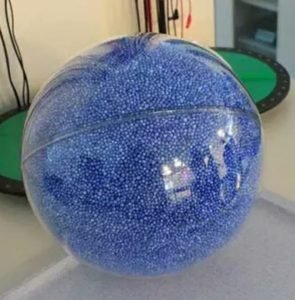
Northern lights as seen by NASA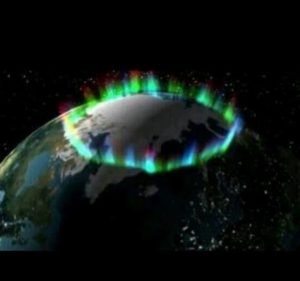
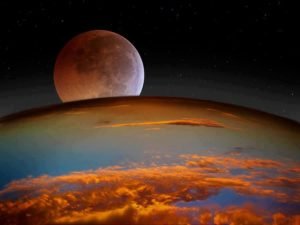
Use the work sheet below for kids to color the planets and then cut them out and put in the right order from the sun.

GLOW IN THE DARK STARS SUPERPAK
INFLATABLE EARTH
NFLATABLE SOLAR SYSTEM
SOLAR SYSTEM FLOOR PUZZLE



























